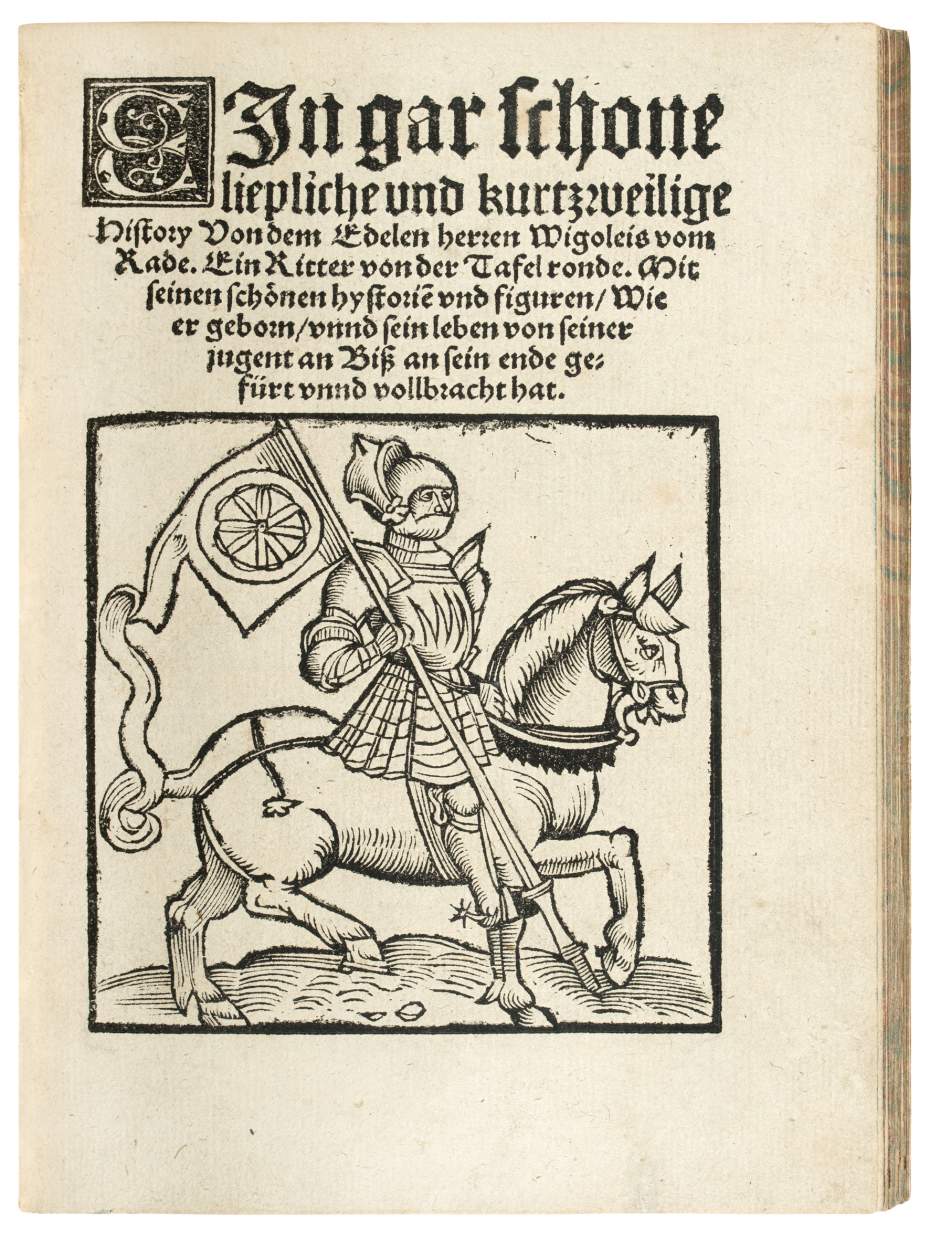

[Wirnt von Grafenberg], EIn gar schone liepliche und kurtzweilige History Von dem Edelen herren Wigoleis vom Rade. Ein Ritter von der Tafel ronde
Strasbourg: Johann Knobloch the Elder, 1519
Second edition
180 x 129 mm


[Wirnt von Grafenberg], EIn gar schone liepliche und kurtzweilige History Von dem Edelen herren Wigoleis vom Rade. Ein Ritter von der Tafel ronde
Strasbourg: Johann Knobloch the Elder, 1519
Second edition
180 x 129 mm
Hide caption

[Wirnt von Grafenberg], EIn gar schone liepliche und kurtzweilige History Von dem Edelen herren Wigoleis vom Rade. Ein Ritter von der Tafel ronde
Strasbourg: Johann Knobloch the Elder, 1519
Second edition
180 x 129 mm
Hide caption

[Wirnt von Grafenberg], EIn gar schone liepliche und kurtzweilige History Von dem Edelen herren Wigoleis vom Rade. Ein Ritter von der Tafel ronde
Strasbourg: Johann Knobloch the Elder, 1519
Second edition
180 x 129 mm
Hide caption

[Wirnt von Grafenberg], EIn gar schone liepliche und kurtzweilige History Von dem Edelen herren Wigoleis vom Rade. Ein Ritter von der Tafel ronde
Strasbourg: Johann Knobloch the Elder, 1519
Second edition
180 x 129 mm
Hide caption
The German prose novel of Wigoleis’ tale is based on a much older, rhymed version, Wigalois, written by Wirnt von Grafenberg 1210-20. Wigoleis, the hero of this story, is the son of Gawein (here called Gabon), King Arthur’s nephew and Knight of the Round Table. Gabon is beaten in a fight by the foreign King Floreys, who owns a magic belt that lends him supernatural power. Subsequently, Gabon is transferred to Floreys’ beautiful and fantastic kingdom, where he attains the hand of the king’s niece but cannot stay because he wants to return to King Arthur’s court. This is a decisive choice because without the charmed belt his return is made impossible.
The subjects of all 35 woodcuts are unequivocally connected and relevant to the narrative, as the illustrations were especially designed for this edition. Their large number – almost one woodcut for each opening – create a highly entertaining piece of literature – as desirable today as it certainly was at the time of its emergence. The style of the woodcuts refers back to much earlier works, giving the impression that the illustrations were lifted directly from an incunabula edition. This stylistic choice of the decoration visually locates the work in the tradition of medieval vernacular works which were immensely popular throughout the German speaking realms. The cuts seem to be executed by two different hands: the one that created the majority prefers airy and straight compositions, while the other uses intense hatching and a more ‘curly’ alignment.
The title and the preface show the same woodcut: Wigoleis, the knight, on horseback with his banner bearing his personal sign, the wheel. On A6v, we are confronted with a very interesting subject: King Floreys stands in one of his chambers with the knight, Gabon, showing him a wheel on which five small naked figures stand. The text explains that this wheel of gold is turning constantly and was manufactured by a priest to guarantee that the fate of the king’s realm should always be a lucky one. This wheel of fortune may be the reason why the protagonist of the tale received his second name, ‘von dem Rade’, and – even when wearing a visor – is always easy to recognise because he carries his wheel.
On A8v, Wigoleis receives fencing lessons. This woodcut is designed and maybe cut by a different, more refined artist who uses pliable, less rigid lines for his modelling. This scene depicts the impetus for his quest for his father. Many of the following scenes deal with jousts, competitions, and wild dragon fights, and involve beautiful ladies as well as gruesome foes.
Due to its high number of original woodcuts, this is an extremely rare edition of a popular vernacular text read by the nobility as well as the upper echelons of urban society.



